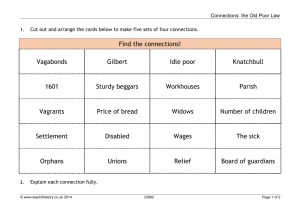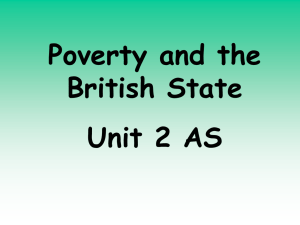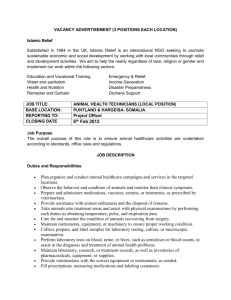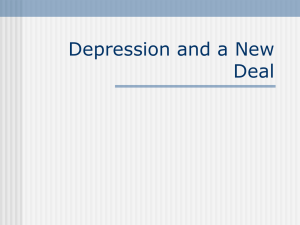Poor Law - HistoryatKamo
advertisement
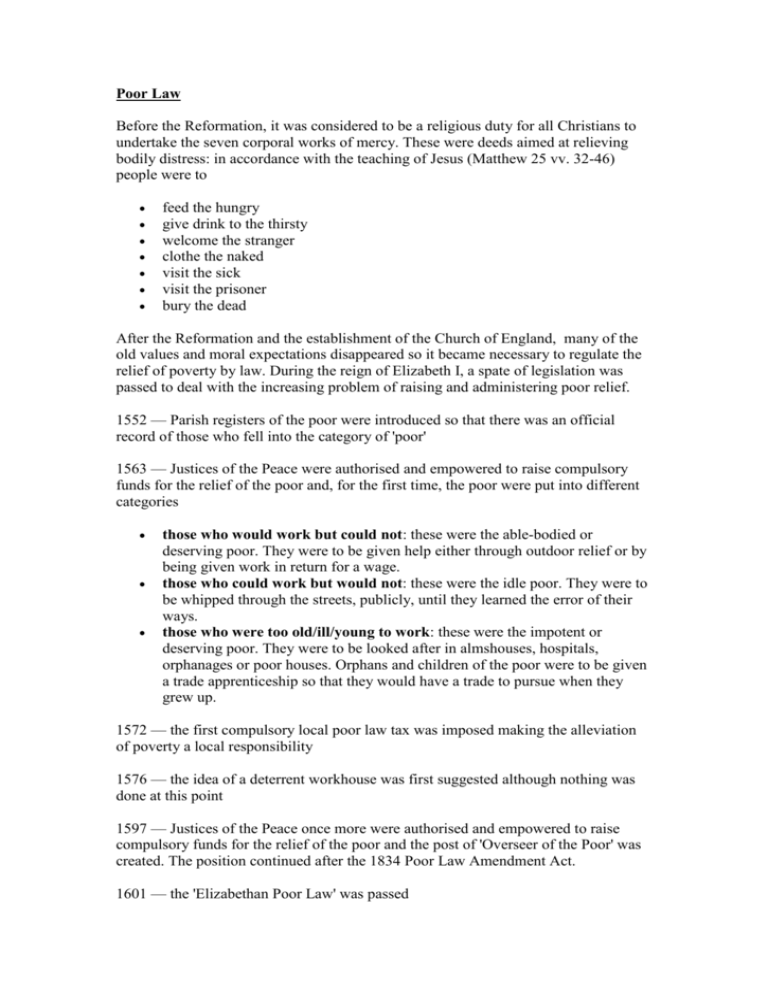
Poor Law Before the Reformation, it was considered to be a religious duty for all Christians to undertake the seven corporal works of mercy. These were deeds aimed at relieving bodily distress: in accordance with the teaching of Jesus (Matthew 25 vv. 32-46) people were to feed the hungry give drink to the thirsty welcome the stranger clothe the naked visit the sick visit the prisoner bury the dead After the Reformation and the establishment of the Church of England, many of the old values and moral expectations disappeared so it became necessary to regulate the relief of poverty by law. During the reign of Elizabeth I, a spate of legislation was passed to deal with the increasing problem of raising and administering poor relief. 1552 — Parish registers of the poor were introduced so that there was an official record of those who fell into the category of 'poor' 1563 — Justices of the Peace were authorised and empowered to raise compulsory funds for the relief of the poor and, for the first time, the poor were put into different categories those who would work but could not: these were the able-bodied or deserving poor. They were to be given help either through outdoor relief or by being given work in return for a wage. those who could work but would not: these were the idle poor. They were to be whipped through the streets, publicly, until they learned the error of their ways. those who were too old/ill/young to work: these were the impotent or deserving poor. They were to be looked after in almshouses, hospitals, orphanages or poor houses. Orphans and children of the poor were to be given a trade apprenticeship so that they would have a trade to pursue when they grew up. 1572 — the first compulsory local poor law tax was imposed making the alleviation of poverty a local responsibility 1576 — the idea of a deterrent workhouse was first suggested although nothing was done at this point 1597 — Justices of the Peace once more were authorised and empowered to raise compulsory funds for the relief of the poor and the post of 'Overseer of the Poor' was created. The position continued after the 1834 Poor Law Amendment Act. 1601 — the 'Elizabethan Poor Law' was passed Provisions of the Elizabethan Poor Law of 1601 It [43 Eliz I Cap. 2], consolidated all the previous legislation into one massive law and made provision for a compulsory poor rate to be levied on every parish the creation of 'Overseers' of relief the 'setting the poor on work' the collection of a poor relief rate from property owners The law required each parish to elect two Overseers of the Poor every Easter: those who were elected were unpaid and often were unwilling appointees who acted under the supervision of the JPs. However, the means of poor relief did provide a way of controlling the 'lower orders' and reinforced a sense of social hierarchy. The Elizabethan Poor Law were appropriate for the society of the time. The duties of the Overseers were to work out how much money would be needed for the relief of the poor and set the poor rate accordingly collect the poor rate from property owners relieve the poor by dispensing either food or money supervise the parish poor-house Two types of relief were available Outdoor relief: the poor would be left in their own homes and would be given either a 'dole' of money on which to live or be given relief in kind - clothes and food for example. This was the norm. Indoor relief: the poor would be taken into the local almshouse the ill would be admitted to the hospital orphans were taken into the orphanage the idle poor would be taken into the poor-house or workhouse where they would be set to work Part of the 1601 Law said that poor parents and children were responsible for each other, so elderly parents were expected to live with their children for example. However, everyone in need was looked after at the expense of the parish, which was the basic unit of poor law administration. There were 15,000 parishes throughout England and Wales, each based on a parish church. However, no mechanism was introduced to enforce any of the measures stated by the 1601 Act and the operation of the poor law was inconsistent. The legislation did not set down any administrative standards so parishes were at liberty to interpret the law in any way they wished. There were great differences between parishes which varied between extreme laxity and extreme stringency in the interpretation of the law. Some towns, such as Bristol, Exeter and Liverpool, obtained local by-laws that established corporations of the poor: their responsibilities extended over several of the urban parishes within their jurisdiction. The Elizabethan legislation was intended to help the 'settled' poor who found themselves out of work (for example) because of illness, or during a hard winter or a trade depression. It was assumed that these people would accept whatever work or relief the parish offered, whether that was indoor or outdoor relief. Neither method of assistance was seen as punitive or harsh. It was intended to deter or deal with the 'sturdy beggars' who were roaming the roads, robbing travellers and generally posing a threat to civil order. The increase in the numbers of beggars was probably the historical background to the nursery rhyme Hark! Hark! The dogs do bark! The beggars are coming to town: Some in rags, some in tags And one in a velvet gown The first adaptation of the 1601 Act came in 1607 and provided for the setting up of Houses of Correction in each county. Here, work was provided for the unemployed at local rates of pay; work could be forced on the idle and on vagabonds. The Houses of Correction were not part of the Elizabethan system of poor relief and were totally separate from the parish poor houses because the law made a clear separation between the settled and 'wandering' poor. The 1601 Elizabethan Poor Law continued with further adaptations — for example the 1662 Settlement Act, Gilbert's Act (1782) and the Speenhamland system of 1795 — until the passing of the 1834 Poor Law Amendment Act and formed the basis of poor relief throughout the country for over two centuries. It was a fair and equitable system run for and administered by local people at a time when the population was small enough for everyone to know everyone else and his/her circumstances. This meant that the idle poor were known as such and would be given short shrift at the hands of the Overseers of the poor. One of the later complaints about the 1601 Act was that the basis of the law was that it rated land and buildings but not personal or movable wealth. Consequently it benefited the industrial and commercial groups in society who did not fall within the parameters of the legislation and so did not pay into the poor rates unless they also happened to own landed property.
